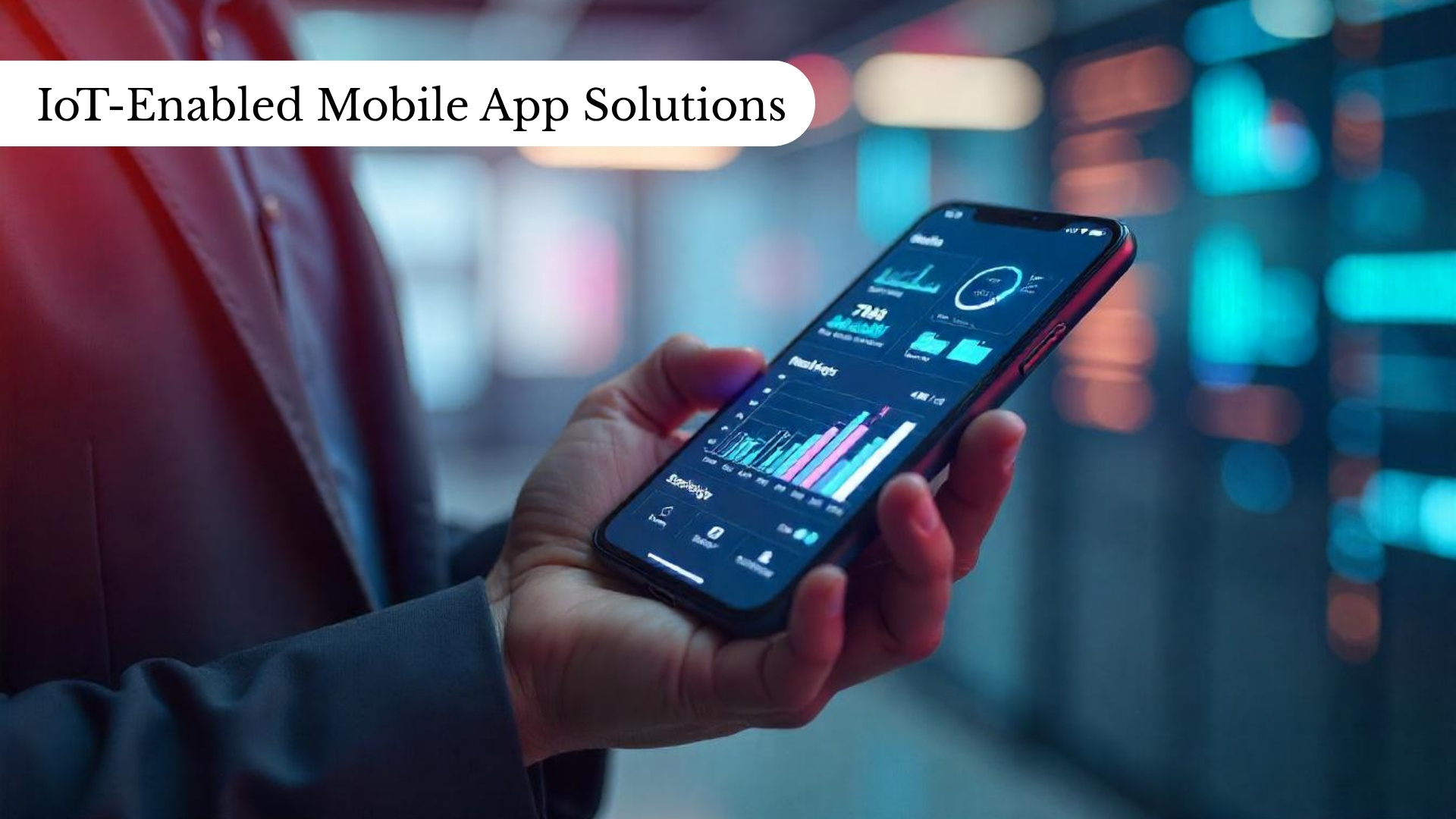
The Parking Revolution
With smart cities evolving rapidly, urban infrastructure must meet demands for real-time data, mobile-first experiences, and sustainable automation. At the heart of this transformation lies intelligent parking management systems powered by IoT-enabled mobile app solutions — capable of reducing congestion by 30%, boosting municipal revenue by 40%, and improving citizen satisfaction by 50%.
This guide breaks down how cross-platform, API-driven smart parking systems are built using IoT, microservices, and modern mobile app architecture.
Unlocking Urban Mobility with IoT
We design scalable, real-time mobile applications that integrate with IoT sensors, edge computing platforms, and cloud infrastructure. These systems help municipalities, startups, and large-scale infrastructure providers:
- Monitor traffic and parking in real time
- Reduce manual enforcement needs
- Provide a seamless app-based user experience
Whether you’re a public sector innovator or a private operator, the goal remains the same—optimize space, reduce congestion, and deliver smarter urban living.
Smart Parking System Architecture
To enable instant occupancy tracking and mobile-first experiences, the architecture includes:
- IoT Sensors: Push updates every 30 seconds
- Mobile Apps: Must reflect changes in real time
- Admin Dashboards: Enforce, analyze, and optimize parking
Pro Tip: Use microservices and event-driven models to ensure performance, maintainability, and horizontal scaling.
Simplified Table: Key Tech Stack for Parking App Development
| Layer | Key Tools & Tech |
| Frontend | React Native, Flutter |
| APIs | REST, GraphQL, WebSockets |
| IoT | MQTT, AWS Greengrass (Edge Computing) |
| Backend | Redis, PostgreSQL (PostGIS), Apache Kafka |
| Payments | Stripe, PayPal APIs (PCI-DSS compliant) |
| Microservices | Docker, Kubernetes, Kong API Gateway |
This stack ensures high availability, low latency, and seamless integration with IoT ecosystems.
Cross-Platform API Strategy
To maintain speed and flexibility, implement a hybrid API approach:
- REST: For CRUD operations (booking, payments)
- GraphQL: For nested mobile-specific queries
- WebSockets: For real-time updates on availability, payments, and violations
Sample GraphQL Query
graphql
query {
findParkingSpaces(location: "37.7749,-122.4194", radius: 500) {
id
status
pricing
}
}This allows your mobile app to retrieve personalized data with minimal load time.
Real-Time Event Handling
Specifically, use Apache Kafka to manage live streams and Redis to cache frequently updated occupancy data. Every time a space becomes occupied or vacated, it emits an event like:
JSON Event Object
json
{
"eventType": "SPACE_OCCUPIED",
"spaceId": "downtown-block-a-001",
"vehicleId": "ABC123",
"timestamp": "2025-06-30T14:30:00Z"
}Consequently, Kafka publishes these events, allowing all services to respond in real time—dashboard, mobile app, analytics, and enforcement.
Security & Performance Optimization
Your app needs to be secure, fast, and always available—even during city-wide rush hours.
Python + SQL Optimization Example
python
def is_allowed(key, limit, window):
# Manages 100+ requests/sec during peaks
return redis.sliding_window_check(key, limit, window)—–
sql
CREATE INDEX idx_spaces_location
ON parking_spaces USING GIST (location);— Speeds up spatial queries from 200ms to under 5ms
Microservices Deployment & Monitoring
Break your solution into focused services:
- Space Management: PostGIS + Redis
- Payments: Stripe or PayPal APIs
- Analytics: Kafka Streams
- Enforcement: Mobile SDKs for violation alerts
Use OAuth 2.0 + PKCE for secure mobile logins
Use Artillery for load testing to handle spikes in demand
Automate deployments with GitHub Actions and Kubernetes HPA
IoT Integration Strategies
MQTT Protocol
Use lightweight messaging like:
bash
parking/spaces/{id}/occupancyAWS Greengrass (Edge Processing)
json
"functions": {
"sensor-processor": {
"runtime": "python3.8",
"handler": "lambda_function.lambda_handler"
}
}Local processing reduces latency by up to 65%, keeping user apps highly responsive—even with unstable internet.
Choosing the Right Frontend Framework
To get started, selecting the appropriate frontend framework is essential for building responsive, cross-platform mobile applications for smart parking solutions. Here’s a breakdown of the top frameworks:
To begin with, React Native is ideal for building citizen- and enforcement-facing mobile apps. It offers strong performance and a low learning curve, making it a popular choice for rapid development and wide device compatibility.
Moreover, Flutter excels at creating custom, visually rich parking dashboards and interactive UIs. It delivers top-tier performance and a moderately steep learning curve, making it suitable for teams focused on creative and dynamic app interfaces.
Xamarin is best suited for government and enterprise teams already invested in the .NET ecosystem. It provides excellent performance but has a higher learning curve due to its deeper integration with Microsoft technologies.
Ionic works well for building prototypes and Progressive Web Apps (PWAs). While its performance is slightly lower compared to native frameworks, it offers a fast learning curve and good development speed.
Therefore, we recommend using React Native with TypeScript for a solid foundation that balances performance, scalability, and ease of development in IoT-enabled mobile app environments.
Final Thoughts
In today’s smart city landscape, scalable parking APIs are the backbone of smart, responsive, IoT-powered urban mobility. Combined with IoT-enabled mobile app solutions and the right tools—PostGIS for spatial accuracy, MQTT for real-time messaging, GraphQL for flexible queries, and React Native for cross-platform app development—you can:
- Slash urban congestion
- Boost municipal revenue
- Deliver seamless citizen experiences
Ultimately, as cities expand and digital expectations grow, investing in scalable parking APIs and IoT-enabled mobile app solutions today ensures a smarter, more connected tomorrow.
Final Thoughts
What are scalable parking APIs?
In essence, they connect mobile apps with IoT sensors to manage real-time parking data, payments, and alerts efficiently.
Why use GraphQL over REST in parking apps?
As a result, GraphQL reduces load time by fetching only needed data, making apps faster and more efficient.
What do MQTT and AWS Greengrass do?
In turn, MQTT sends real-time updates from sensors, while Greengrass processes data locally to cut latency.
Which frameworks are best for smart parking apps?
For example, use React Native for performance and flexibility, Flutter for custom UIs, and Xamarin for .NET teams.
How is security and performance handled?
In conclusion, OAuth 2.0, Redis caching, SQL indexing, and Kubernetes ensure fast, secure, and scalable apps.

